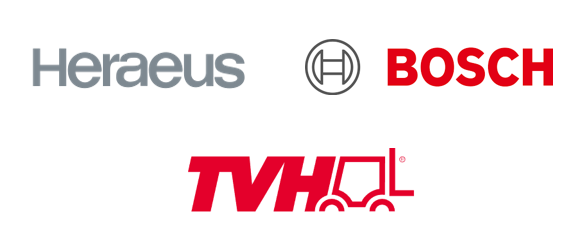Market Overview:
"The India electric rickshaw market was valued at US$ 3.9 billion in 2024 and is expected to register a CAGR of 6.2% over the forecast period and reach US$ 6.7 billion in 2033."
|
Report Attributes |
Details |
|
Base Year |
2024 |
|
Forecast Years |
2025-2033 |
|
Historical Years |
2021-2024 |
|
India Electric Rickshaw Market Growth Rate (2025-2033) |
6.2% |
An electric rickshaw in India, also referred to as an e-rickshaw or electric auto-rickshaw, is a battery-powered three-wheeled vehicle designed for passenger transportation. Serving as an eco-friendly and economical alternative to traditional auto-rickshaws with internal combustion engines, electric rickshaws contribute to sustainable urban mobility by producing zero emissions and minimizing air pollution.
These vehicles feature a cabin-like structure behind the driver's seat to accommodate passengers. Propelled by an electric motor, they rely on rechargeable batteries, typically lead-acid or lithium-ion, which can be charged using a standard electrical outlet. They are recognized for their silent operation, low maintenance costs, and fuel efficiency, making them a popular choice for short-distance transportation in congested urban environments.
The India Electric Rickshaw market is experiencing substantial growth propelled by crucial factors and prevailing trends. A growing awareness of environmental sustainability and a shift toward cleaner transportation options are driving the heightened demand for electric rickshaws. The increasing focus on mitigating air pollution and carbon emissions, especially in densely populated urban areas, is fostering the widespread adoption of these environmentally friendly vehicles.
Government initiatives and incentives supporting electric mobility, combined with advancements in battery technology, contribute significantly to the market's expansion. Moreover, the cost-effectiveness, fuel efficiency, and suitability of electric rickshaws for short-distance commuting in congested urban environments serve as pivotal drivers. The market also reflects a trend towards continuous technological advancements in battery performance and charging infrastructure, aligning with the broader movement towards sustainable and energy-efficient transportation solutions in India.
India Electric Rickshaw Market Trends and Drivers:
Environmental Sustainability: The escalating global focus on environmental sustainability and the imperative to reduce carbon emissions have created a favourable backdrop for the widespread adoption of electric rickshaws. These vehicles, characterized by their emission-free operation, seamlessly align with the increasing emphasis on cleaner and more environmentally friendly transportation solutions. This alignment not only addresses pressing environmental concerns but also underscores the significant role those electric rickshaws play in fostering a sustainable and eco-friendly urban mobility landscape. This resonates with the broader international commitment to mitigating the impacts of climate change.
Rising Urbanization: The ongoing trend of urbanization, marked by the continual concentration of populations in cities, has intensified the requirement for efficient and sustainable last-mile transportation solutions. This evolving urban landscape has spurred an increased demand for alternatives that address issues such as congestion and environmental impact while providing practical mobility solutions. Responding to this demand, electric rickshaws have emerged as a preferred option for short-distance commuting. Their compact design and agility make them well-suited for navigating through congested urban areas, presenting a practical and environmentally friendly solution to the challenges associated with last-mile transportation. As urban areas continue to expand and grapple with heightened transportation needs, electric rickshaws play a pivotal role in meeting the evolving demands of urban residents, contributing to a more sustainable and effective urban mobility framework.
Operational Cost Savings: The cost savings associated with the operational aspects of electric rickshaws stand out as a pivotal factor in driving their widespread adoption. In contrast to traditional auto-rickshaws powered by internal combustion engines, electric rickshaws demonstrate a general reduction in operational expenditures. A primary contributor to this cost-effectiveness is the notably lower fuel costs, as electric rickshaws rely on electricity, which tends to be more economical than conventional fuels. Additionally, electric rickshaws showcase diminished maintenance requirements, benefiting from the simplicity of electric motors and fewer moving parts. This results in reduced wear and tear, translating into fewer maintenance issues and associated costs. Furthermore, the extended lifespan of electric components, such as motors, contributes to prolonged vehicle durability, minimizing the need for costly replacements. This combination of reduced fuel costs, lower maintenance needs, and extended component longevity positions electric rickshaws as an economically attractive option for both operators and end-users. Operators experience improved profit margins due to lower operational costs, while end-users gain access to potentially more affordable transportation services. As sustainability and cost efficiency take center stage in the transportation sector, the operational cost advantages of electric rickshaws make them a compelling and financially sound solution for urban mobility.
India Electric Rickshaw Market Restraining Factors:
Infrastructure Challenges: The widespread adoption of electric rickshaws in India faces a significant obstacle due to infrastructure challenges, primarily stemming from the insufficient availability of charging facilities. This issue is particularly pronounced in rural and semi-urban areas, where charging stations are limited. Such a scarcity raises concerns among potential users regarding the convenience of accessing charging points and exacerbates the fear of range anxiety—a concern about the vehicle running out of charge without reaching a charging station. The absence of a well-established charging network in these regions not only inconveniences electric rickshaw users but also deters operators from considering the transition to electric fleets. Effectively addressing these infrastructure challenges is essential to alleviate range anxiety, build user confidence, and create a more favourable environment for the extensive growth of the electric rickshaw market in India. This calls for a comprehensive strategy that involves substantial investments in the development of charging infrastructure, especially in rural and semi-urban areas, to establish a reliable and widespread charging network.
Battery Technology Limitations: Persistent challenges in battery technology pose hurdles to the widespread adoption of electric rickshaws in India. Despite ongoing advancements, issues such as limited energy density, constrained driving range, and the necessity for frequent charging persist. The restricted energy storage capacity affects the overall range, particularly critical for commercial operators relying on these vehicles extensively. Range limitations contribute to "range anxiety" among potential users, deterring them from considering electric rickshaws for daily commuting. Additionally, the need for frequent charging sessions poses operational challenges, impacting the efficiency and reliability of electric rickshaw services. Overcoming these limitations through continued research and development is crucial for enhancing the overall viability and attractiveness of electric rickshaws in the Indian market, aligning them more closely with user expectations and operational requirements.
India Electric Rickshaw Market Opportunities:
Product Innovation: A crucial strategy for leading electric rickshaw manufacturers in India is continuous product innovation and differentiation to sustain competitiveness in the dynamic market. This involves ongoing improvements in battery technology to address range concerns, refining vehicle design for contemporary aesthetics and sustainability, and integrating smart features to meet evolving consumer preferences for safety, comfort, and connectivity. By embracing advancements in these areas, manufacturers can position their electric rickshaws as sophisticated, user-friendly, and cutting-edge solutions that not only meet but exceed the expectations of consumers, ensuring a strong competitive foothold in the growing market.
Integration for Sustainable Practices: A significant opportunity for leading electric rickshaw manufacturers in India lies in incorporating sustainable practices into their production processes, encompassing the use of eco-friendly materials and the adoption of energy-efficient manufacturing methods. By opting for materials with reduced environmental impact and employing energy-efficient techniques, manufacturers contribute to a lowered carbon footprint and align with broader sustainability objectives. This commitment not only reflects the inherent eco-friendly nature of electric rickshaws but also elevates the brand image of manufacturers, appealing to the growing preferences of environmentally conscious consumers. Furthermore, embracing sustainable practices positions manufacturers as leaders in environmentally responsible production, responding strategically to regulatory trends and industry standards, thereby enhancing market appeal and distinguishing them in the competitive landscape.
India Electric Rickshaw Market Segmentation
By Motor Power
- <1000 W
- 1000-15000 W
- >1500 W
By Battery Capacity
- <101 Ah
- >101 Ah
By Battery Type
- Li-ion Battery
- Lead Acid Battery
By Sales Channel
- Organised
- Unorganised
By End User
- Passenger Carrier
- Load Carrier
By Region
- North India
- West and Central India
- South India
- East India
Leading Companies in India Electric Rickshaw Market & Competitive Landscape:
The India electric rickshaw market is highly competitive, with several key players vying for market share and actively engaging in strategic initiatives. These companies focus on product innovation, technological advancements, and expanding their product portfolios to gain a competitive edge. These companies are continuously investing in research and development activities to enhance their product offerings and cater to the evolving needs of customers in terms of efficiency, performance, and sustainability.
Company List
- Adapt Motors Private Limited
- ATUL Auto Limited
- CityLife EV
- E-Ashwa Automotive Private Limited
- Goenka Electric Motor Vehicles Private Limited
- Jezza Motors (Vani Electric Vehicles Pvt. Ltd)
- Kinetic Green Energy & Power Solutions Ltd
- Lohia Auto Industries
- Mini Metro EV LLP
- Saera Electric Auto Private Limited
- Terra Motors India Corp.
- Thukral Electric Bikes
- Udaan E Rickshaw
Recent Development
- August 2023: Udaan E-Vehicles, a manufacturer of e-rickshaws, has unveiled plans for extensive expansion by increasing its production capacity and fortifying its market presence in high-growth regions like Uttar Pradesh and West Bengal.
- June 2023: Omega Seiki Mobility has introduced the OSM Stream City, their latest electric auto-rickshaw, aiming to transform urban mobility in India.
- March 2022: Zuperia Auto Pvt. Ltd has introduced the Narain Xi, a new three-wheeler electric vehicle equipped with an 85 AH Li-Ion battery. The vehicle boasts an impressive range of up to 100 km on a single charge.
Research Scope
|
Report Metric |
Report Details |
|
India Electric Rickshaw Market Size available for the years |
2022-2033 |
|
Base Year |
2024 |
|
Forecast Period |
2025-2033 |
|
Compound Annual Growth Rate (CAGR) |
6.2% |
|
Segment covered |
By motor power, battery capacity, battery type, sales channel, end-user, and regions. |
|
Regions Covered |
North India, West and Central India, South India, East India |
|
Key Players |
Adapt Motors Private Limited, ATUL Auto Limited, CityLife EV, E-Ashwa Automotive Private Limited, Goenka Electric Motor Vehicles Private Limited, Jezza Motors (Vani Electric Vehicles Pvt. Ltd), Kinetic Green Energy & Power Solutions Ltd, Lohia Auto Industries, Mini Metro EV LLP, Saera Electric Auto Private Limited, Terra Motors India Corp., Thukral Electric Bikes and Udaan E Rickshaw, among others. |
Frequently Asked Question
What is the size of the India electric rickshaw market in 2024?
The India electric rickshaw market size reached US$ 3.9 billion in 2024.
At what CAGR will the India electric rickshaw market expand?
The India electric rickshaw market is expected to register a 6.2% CAGR through 2025-2033.
How big can the India electric rickshaw market be by 2033?
The market is estimated to reach US$ 6.7 billion by 2033.
How is the India electric rickshaw market report segmented?
The India electric rickshaw market report segmentation is based on motor power, battery capacity, battery type, sales channel, end-user, and regions.
Who are the key players in the India electric rickshaw market report?
Key players in the India electric rickshaw market report include Adapt Motors Private Limited, ATUL Auto Limited, CityLife EV, E-Ashwa Automotive Private Limited, Goenka Electric Motor Vehicles Private Limited, Jezza Motors (Vani Electric Vehicles Pvt. Ltd), Kinetic Green Energy & Power Solutions Ltd, Lohia Auto Industries, Mini Metro EV LLP, Saera Electric Auto Private Limited, Terra Motors India Corp., Thukral Electric Bikes and Udaan E Rickshaw, among others.

